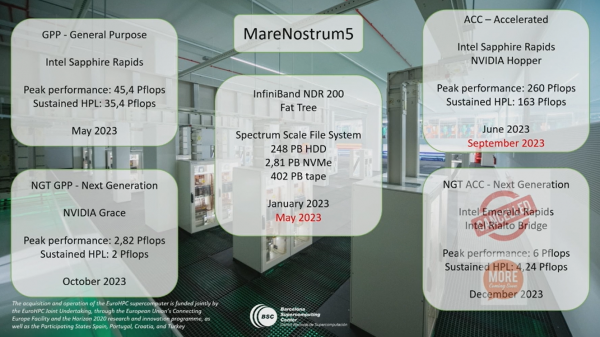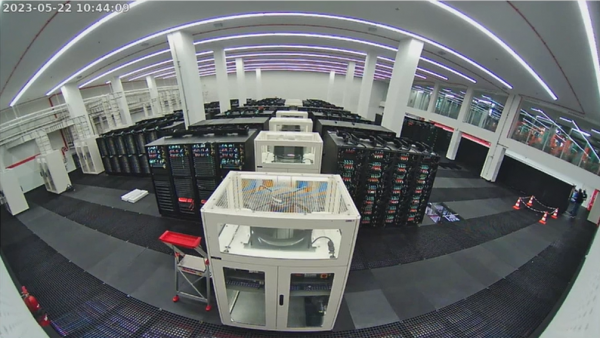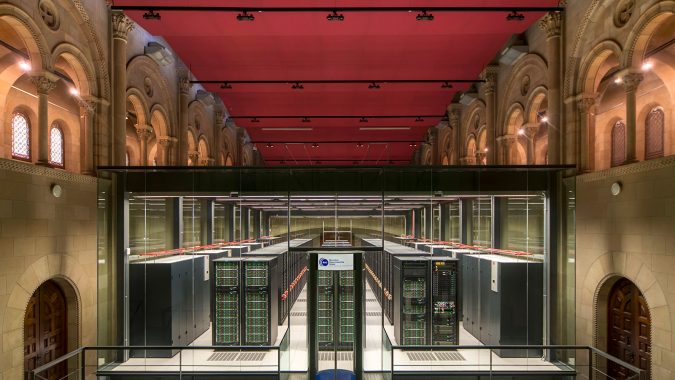MareNostrum 5, the next-generation supercomputer at the Barcelona Supercomputing Center (BSC) and one of EuroHPC’s flagship pre-exascale systems, has had a difficult path to reality since its announcement in 2020. So when Sergi Girona – operations director for BSC – took the stage at ISC in Hamburg yesterday, he announced the latest (relatively minor) delays to the system with a laugh and a shrug – after all, MareNostrum 5’s timeline has seen much worse than this. (For more on that whole saga, read our prior coverage.)
When we spoke with Girona just three months ago, MareNostrum 5 installation had begun (albeit just the storage systems) and the system was on track to hit final acceptance by the end of June. In a presentation at ISC, Girona shared that timelines had slipped: the networking and storage systems, which had been anticipated in January (and which were anticipated to arrive shortly when we spoke in February) have since had some components delayed to later this month. Despite that, Girona said that they have begun transferring user data onto the incomplete hardware that has been installed.
The 35.4 Linpack petaflops general-purpose partition, powered by Intel’s Sapphire Rapids CPUs, had been expected by the end of February. Now: “expected to be delivered [at the] end of May,” Girona said, before theatrically wagging his finger. “[But] it will not,” he admitted. “It will come! But, you know, it’s never easy to get that on time.”

Then, the much more powerful accelerated partition: 163 Linpack petaflops delivered by Sapphire Rapids CPUs and Nvidia Hopper GPUs. “Was expected to be delivered by June,” Girona said, before wagging his finger yet again. “No. At this point in time, we’re informed that maybe it’s coming in September. We’re working hard to have the system in production.”
“But this is not the only good news we have!” Girona joked. “We were expecting also to provide additional servers and additional systems on different technologies.” Of those two additional partitions, the general-purpose one – based on Nvidia’s Grace CPUs – is “on schedule; good progress!” The other, however, was slated to run on Intel’s Emerald Rapids CPUs and its Rialto Bridge GPUs. Just one problem: Rialto Bridge was canceled by Intel.

“Our cluster on this partition is being reanalyzed, and we will be assessing new technologies that will be helpful for our users to perform the science they are doing,” Girona said.
The other infrastructure, at least, is coming along nicely, with Girona sharing a couple of images of the progress in the datacenter. “It’s difficult to compete with the chapel, okay?” he said, referring to BSC’s famous chapel datacenter (pictured in the header), which currently hosts MareNostrum 4. “But we’re trying to do our best.”

Speaking of the chapel: “What are we doing next [after MareNostrum 5]?” Girona continued. “We are building a quantum system within the chapel – so the chapel will be reused for hosting the quantum systems we will be hosting in Barcelona.”
“And next, we’re building MareNostrum 6,” he added.




























































